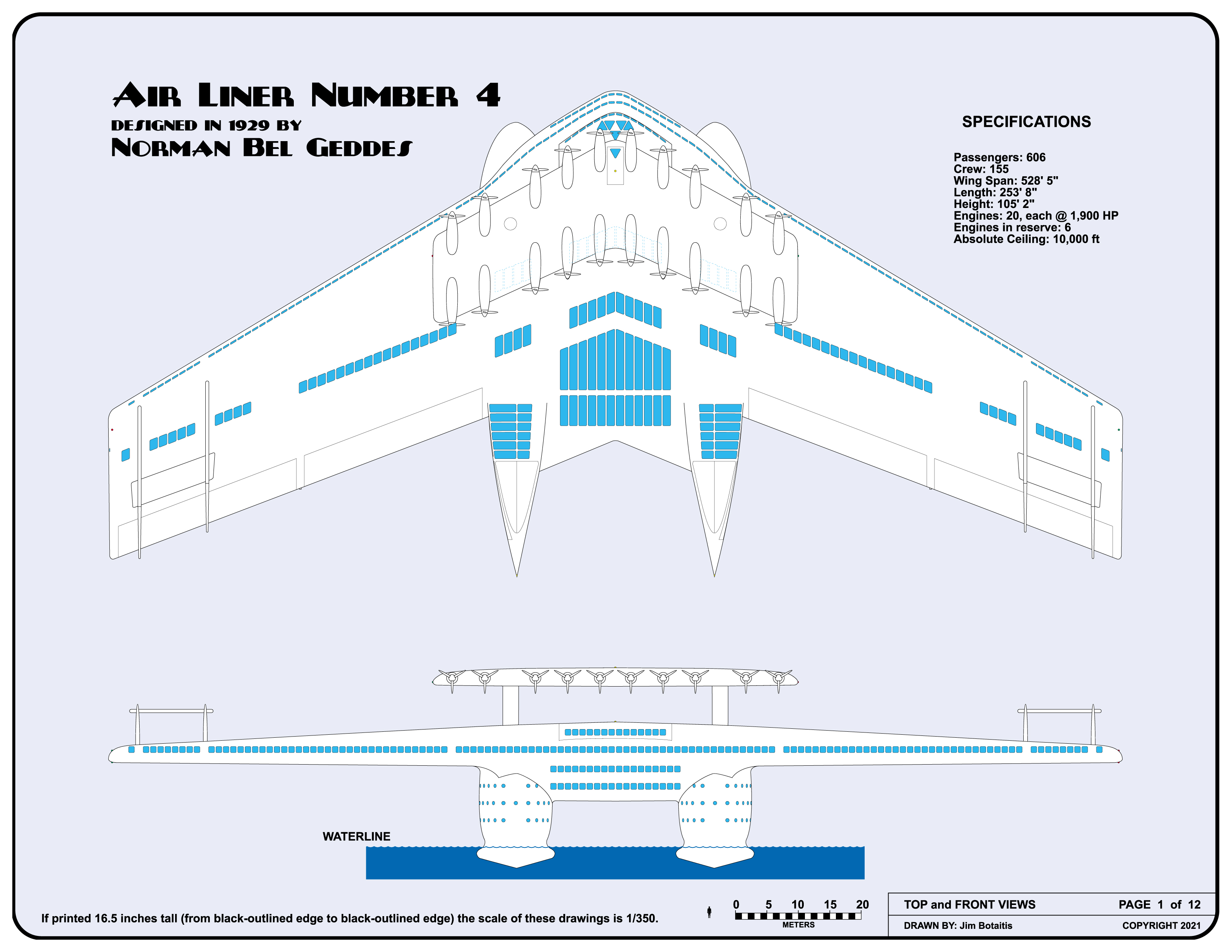I found this Norman Bel Geddes and Otto Koller behemoth from 1920's here:
http://home.att.net/~dannysoar/BelGeddes.htm
http://home.att.net/~dannysoar/BelGeddes.htm
Stargazer2006 said:Not quite my definition of "gorgeous"... :
... but very interesting, anyway. I often figured this design was typical Popular Mechanics or such invention... As to the flying characteristics of such an aircraft, if built, I doubt very much it could have been very good...


From an engineering point of view, with these engines and design, would it be able to fly in a good manner?
Thank you, always wanted the opinion from a specialistFrom an engineering point of view, with these engines and design, would it be able to fly in a good manner?
Probably flyable.
Hmmm. Maybe it could take off without nosing over. I wouldn't want to be on board for the landing, tho.Probably flyable.
Sure, it makes all sense. Thanks!I would have thought, had this actually been built, that it would have needed considerable engine upthrust, like the Savoia S.55 . . .
View attachment 623982
Image source HERE . . .
cheers,
Robin.
I do not have the file/reference, which I will post if/when I can find it again,sorry, but saw some really cool drawings and such somewhere on ordinary Google search, etc.Does anybody has this image in a better resolution, please?

A contemporary color artist's drawing (it's not clear whether Geddes colored it, or not himself) appears in The Detroit News, January 1, 1933.Engine room support color is comical like a steam liner.
I would have thought, had this actually been built, that it would have needed considerable engine upthrust, like the Savoia S.55 . . .
View attachment 623982
291 Pan American Clipper 1935-1946 22 folders
Bel Geddes himself writes in Horizons (p.111):One puzzle is the involvement of Otto A. Kuhler (or Koller?). It's claimed that he was an engineer involved with Pfalz Flugzeugwerke designs during WW1 but there doesn't seem to be any record of him. I'm assuming that here there is some confusion with Bel Geddes' fellow industrial designer, Otto August Kuhler.
That would mean an even higher and less believable output during the years he did work.Minor point: it may be that Herr Dr. O. A. Koller did not work 14 continuous years in the German airplane industry. Perhaps he had to take a few years "off" during the post World War 1 slump in German airplane production.

Outstanding illustration.Jim "JBot" Botaitis's 12 sheet drawing set, free for any use, jpeg and pdf versions:
http://www.jbot.ca/space/22an.shtml

